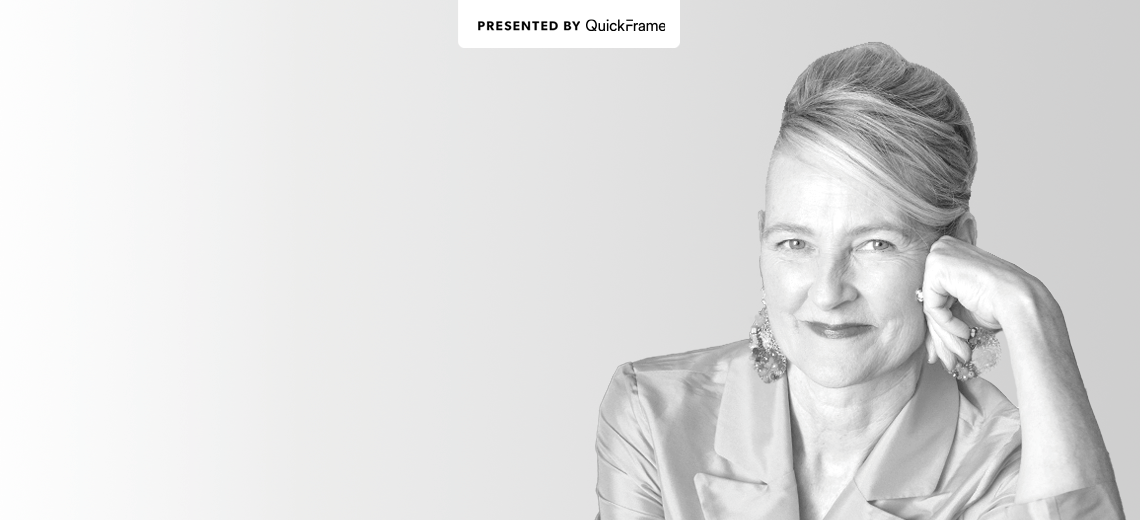This is an episode of the Glossy Fashion Podcast, which features candid conversations about how today’s trends are shaping the future of the fashion industry. More from the series →
Subscribe: Apple Podcasts • Spotify
When Elyce Arons met Kate Spade, then Kate Brosnahan, at 18 years old, the two quickly became friends over a shared interest in journalism. But they moved to New York after college and realized a greater passion for the fashion industry. That led the duo, plus Andy Spade and Pamela Bell, to become the founding partners of Kate Spade, in January 1993.
After eventually selling Kate Spade to Neiman Marcus Group in 2006, Arons and Kate Spade realized they hadn’t lost the desire to create and design. Thus, in 2016, they launched Frances Valentine, starting with shoes and handbags. Since then, Frances Valentine has built a growing business by focusing on often overlooked demographics: boomers and Gen X.
“When [Kate and I] started Kate Spade, we were 29 and 30 years old. We were at a time in our lives where we were young professionals, and the products we made were targeted to women like us. But when we started Frances Valentine, we were missing things in the market that we wanted.” Arons said on the latest episode of The Glossy Podcast. “I thought, ‘We’ve done this before. I know we can do this again.’ So we started by making beautiful [shoe] designs at great prices, with good quality.”
Though Frances Valentine initially began selling apparel as an homage to Kate Spade, it realized the great demand and soon released a full apparel line to complement its accessories. Apparel has grown to become the brand’s No. 1 product category. Now, Frances Valentine has its sights on expansion, most recently entering the home decor and beauty categories. As it slowly works toward becoming a premier lifestyle brand, it also plans to open more physical store locations.
Below are additional highlights from the conversation, which have been lightly edited for clarity.
The pandemic’s impact on marketing
“[Catalogs] weren’t our No. 1 [marketing investment] pre-pandemic. We were doing a lot of digital paid ads because our business really took off with e-commerce. I can’t take credit for [the catalogs]; the team kept coming to me and saying, ‘We really should do a catalog.’ In my mind, it was sort of stodgy and old-fashioned. I thought, ‘Who does catalogs anymore?’ [But the team] was totally right. … We shot the images in March 2020. As we were flying home, Covid was hitting, and that weekend, everything closed down. Luckily, we had the film, and we edited the whole thing on Zoom, and we launched our first catalog on June 1 of 2020. It couldn’t have been better timing for us, because everybody was home and in need of some joyful dressing, because everybody was sad and scared. We’ve been doing catalogs ever since. It was just one of those fortuitous things that happened at the right time.”
Expansion plans
“Companies like us are always looking to fundraise. It’s just always an ongoing challenge. Because we’re growing, we need more capital for our production all the time, so we’re consistently fundraising. Our plan is to grow all of the channels that we have. E-commerce has had enormous growth — it grew 85% in 2021. And it’s grown every single year that we’ve had it. We’ve put a larger focus on retail over the last couple of years by adding new stores, and we’ve got plans to add more down the line. … We’ve got [stores in] Alexandria and Naples, and we’re [eying] Dallas. And our wholesale division has grown by leaps and bounds in just a few short months.”
Ad position: web_incontent_pos1
Navigating challenges of the moment
“We were navigating how to get products in on time last year. That was a big challenge for most businesses. We didn’t have too many issues — really, just a two-week delay. But when you’re putting out a catalog, it matters. That’s proven to be less of an issue this year. Now — and this is a good problem to have — the challenge is editing down the fall line so that we don’t go out with too much, and so we maintain focus on the core styles people are really going to love and are looking for. Editing is a difficult job for me, because every piece of clothing is like one of our children. It’s hard to not keep all of them.”


